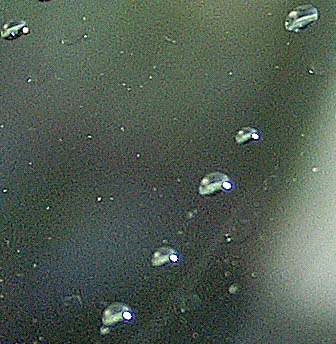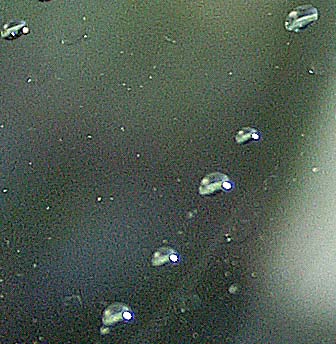Sticky water
The physics of wetting, manifest in everyday occurrences ranging from leaves in a rainfall to functional raingear, has intrigued scientists for over a century. Nonetheless, even a seemingly simple situation such as a droplet bouncing off a water-repellant (“hydrophobic”) surface is worth revisiting.
Writing in Physical Review Letters, Michael Smith (at the University of Edinburgh and the University of Nottingham, both in the UK) and Volfango Bertola (at the University of Edinburgh and the Politecnico di Torino, Italy) examine why droplets of water containing small amounts of a flexible polymer do not rebound from water-repellant surfaces. They dispute the prevalent wisdom which holds that the rebound effect is suppressed because the polymer stretches, which temporarily increases viscosity due to large extensional deformations (extensional viscosity). Instead, by measuring the fluid velocity inside the droplet using fluorescent particles, and directly visualizing fluorescent biopolymer molecules (DNA), they posit that as the line of contact between the edge of the droplet and the substrate moves, it stretches the polymer, bringing about an effective resistance that lowers the available energy below that necessary for a droplet to rebound: The receding contact line, not the increased extensional viscosity, affects the dynamics of the droplet. This work augurs well for the study of spray deposition processes ranging from small-scale (spray painting, inkjet printers, etc.) scenarios to industrial-scale ones such as spraying of agrochemicals. – Sami Mitra





